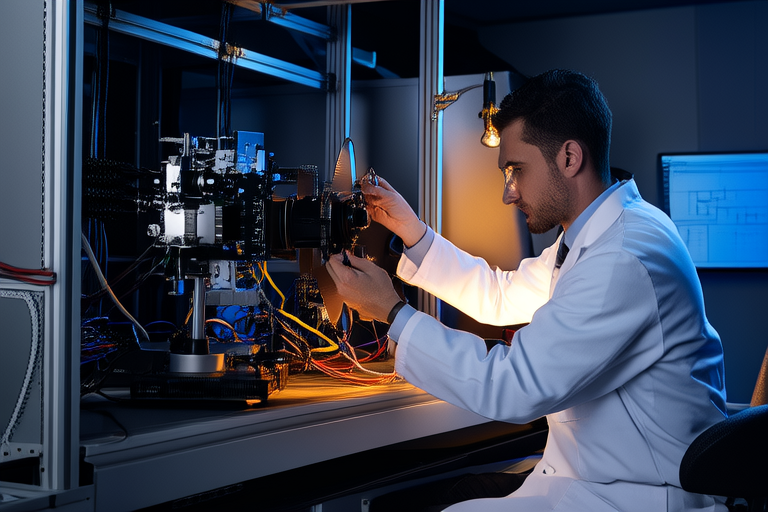“`html
Behind the Scenes: Exploring the Science of Computer Vision
Introduction
Computer vision is a rapidly advancing field within artificial intelligence that focuses on enabling machines to interpret and understand visual information from the world around them. This technology mimics the human visual system’s ability to perceive and comprehend images, allowing computers to “see” and make sense of digital imagery. By analyzing visual data, computer vision systems can perform tasks such as identifying objects, recognizing faces, and even understanding complex scenes. The significance of computer vision in modern technology cannot be overstated; it plays a pivotal role in enhancing automation, improving safety, and driving innovation across numerous sectors.
Core Concepts
Image Processing: At the heart of computer vision lies image processing, which involves manipulating digital images to enhance their quality or extract useful information. Techniques range from basic adjustments like brightness and contrast to more advanced methods like noise reduction and edge detection. These processes prepare raw images for further analysis.
Feature Extraction: Feature extraction refers to the identification of distinctive characteristics within an image that can be used for classification or recognition purposes. For instance, edges, corners, and textures are common features extracted from images to help distinguish between different objects.
Object Recognition: Object recognition is the process by which a computer vision system identifies and categorizes objects within an image. It leverages machine learning algorithms trained on vast datasets to recognize patterns associated with specific objects. For example, a self-driving car might use object recognition to identify pedestrians, cyclists, and other vehicles on the road.
Deep Learning Models: Deep learning models, particularly convolutional neural networks (CNNs), have revolutionized computer vision by enabling machines to learn hierarchical representations of visual data automatically. These models consist of multiple layers of interconnected nodes that process input data progressively, extracting increasingly abstract features until the final layer produces a prediction or classification.
Applications
Computer vision finds application in diverse fields, transforming industries and enhancing everyday life. In autonomous vehicles, it enables cars to navigate safely by detecting obstacles, reading traffic signs, and adapting to changing road conditions. Companies like Tesla and Waymo are at the forefront of integrating advanced computer vision systems into their vehicles.
In medical imaging, computer vision assists radiologists in diagnosing diseases more accurately and efficiently. Systems can analyze X-rays, MRIs, and CT scans to detect abnormalities that might otherwise go unnoticed. For instance, AI-driven tools can now identify early signs of cancer with remarkable precision.
Facial recognition technology is widely used for security and authentication purposes. From unlocking smartphones to controlling access to secure facilities, facial recognition systems provide a convenient and non-intrusive method of verification. However, concerns over privacy and misuse have sparked debates about its ethical implications.
Finally, augmented reality (AR) relies heavily on computer vision to overlay digital content onto the real world seamlessly. Applications range from gaming experiences like Pokémon Go to industrial uses such as remote assistance for maintenance tasks. AR enhances user interaction with physical environments by providing contextual information in real-time.
Challenges and Limitations
Despite its successes, computer vision faces several challenges and limitations. One major concern is data privacy. As systems collect vast amounts of visual data, ensuring this information remains confidential and protected against unauthorized access becomes paramount. Developers must implement robust security measures to safeguard users’ personal details.
Bias in algorithms represents another significant issue. Machine learning models trained on imbalanced or biased datasets may produce skewed results, leading to unfair treatment of certain groups. Efforts are underway to address these biases through diverse training datasets and fairness-aware algorithms.
Additionally, achieving robust performance in real-world conditions poses difficulties. Environmental factors such as lighting changes, occlusions, and varying weather conditions can affect a system’s accuracy. Researchers continue to work on improving algorithms to handle these challenges effectively.
Lastly, the demand for computational power required by sophisticated computer vision models remains high. Training large-scale neural networks consumes substantial resources, making it essential to develop more efficient architectures and hardware solutions.
Future Prospects
The future holds exciting possibilities for computer vision. Advancements in real-time processing will enable faster and more responsive systems capable of handling dynamic environments. Improved algorithms could lead to greater efficiency and accuracy, reducing the need for extensive computational resources.
Integration with other emerging technologies like artificial intelligence (AI) and quantum computing promises to unlock new capabilities. Combining AI with computer vision could result in smarter decision-making processes, while quantum computing might accelerate training times and optimize model performance.
Conclusion
Computer vision stands as a cornerstone of modern technological progress, offering solutions to complex problems and enhancing various aspects of daily life. Its ability to interpret and understand visual information opens doors to innovations that improve safety, healthcare, and convenience. As research continues to advance, we can expect computer vision to play an increasingly vital role in shaping the future of technology and positively impacting society.
“`


